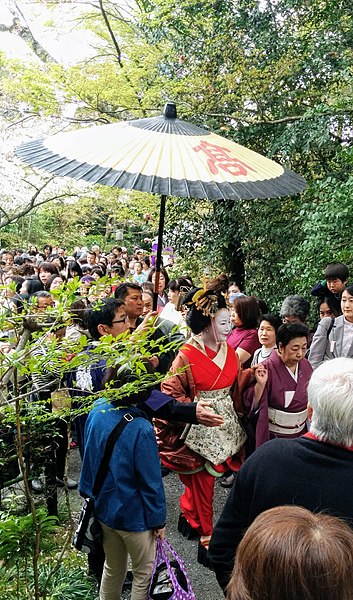Oiran is a collective term for the highest-ranking courtesans in Japanese history, who were considered to be above common prostitutes for their more refined entertainment skills and training in the traditional arts. Divided into a number of ranks within this category, the highest rank of oiran were the tayū, who were considered to be set apart from other oiran due to their intensive training in the traditional arts and the fact that they lived and worked in Kyoto, the political capital of Japan, which remained the cultural heart of the country when the seat of political power moved to Tokyo. Though oiran by definition also engaged in prostitution, higher-ranking oiran had a degree of choice in which customers they took; tayū, in contrast, did not engage in sex work at all.
An oiran sitting with a client and an apprentice. Ukiyo-e print by Suzuki Harunobu (1765).
Picture of oiran in 1917
The modern-day tayū Kisaragi of the Wachigaiya okiya of Shimabara, Kyoto on parade
An actress dressed as an oiran in parade wearing distinctive high platform shoes
Courtesan, in modern usage, is a euphemism for a kept mistress or prostitute, particularly one with wealthy, powerful, or influential clients. The term historically also referred to a courtier, a person who attended the court of a monarch or other powerful person.
Veronica Franco, famous Venetian poet and courtesan. Portrait by Paolo Veronese.
Courtesans with their servants by Lancelot Volders
Olympe Pélissier (Vernet, 1830) was described by Balzac as "the most beautiful courtesan in Paris". In 1846, she married Rossini.
Lais of Corinth by Hans Holbein the Younger, Kunstmuseum Basel








